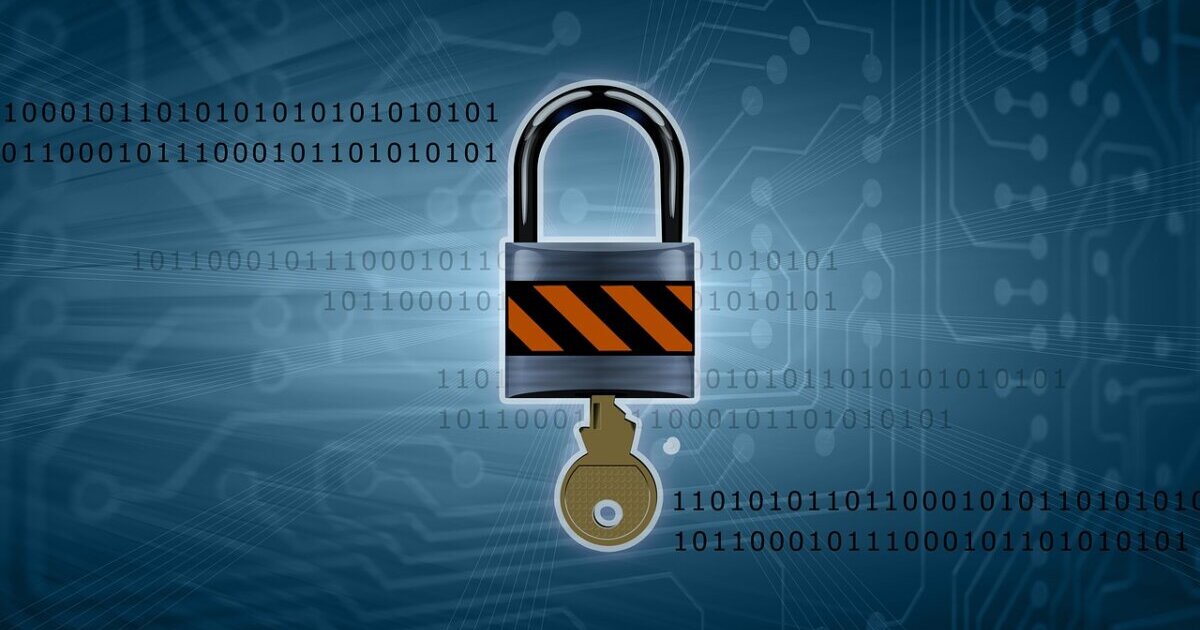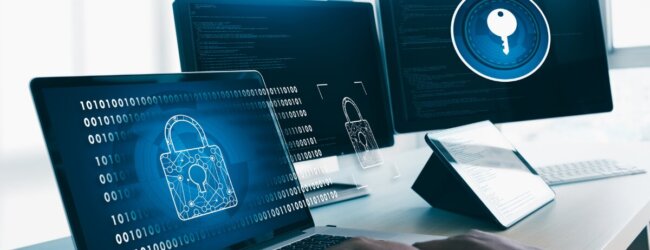
Mastering Security Risk Management: Techniques for Comprehensive Threat Modeling and Vulnerability Assessment
Author: Kysha Praciak
· 5 mins readIn the complex landscape of today’s digital world, your organization’s security is paramount. Security risk management is the process by which you identify, assess, and prioritize the risks to your organization’s information assets. This proactive approach is crucial for protecting sensitive data and ensuring business continuity. Without a clear understanding of the potential threats and vulnerabilities, your organization is like a ship navigating treacherous waters without a compass.
Security risk management is not a one-off exercise but a continuous process that evolves as new threats emerge and existing ones evolve. It requires your undivided attention and a strategic approach to safeguard your organization’s assets. This involves not just technology, but also processes and people. By mastering this discipline, you can create a resilient environment that can adapt to the ever-changing threat landscape.
The stakes are high, and the cost of a breach can be catastrophic, both financially and in terms of reputation. As you delve into the world of security risk management, remember that the goal is not to eliminate all risk—such an endeavor would be futile and prohibitively expensive—but to manage it in a way that aligns with your organization’s risk appetite and business objectives.
What is Threat Modeling in Security Risk Management?
Threat modeling is a structured approach for identifying and quantifying the threats to your system or application. It’s an essential component of security risk management that allows you to think like an attacker and anticipate their moves. The process involves identifying potential threats, categorizing them, and determining the likelihood of their occurrence as well as the potential impact on your organization.
At its core, threat modeling aims to provide a clear picture of the potential attack vectors that could be exploited by adversaries. By understanding these vectors, you can prioritize security measures and allocate resources effectively. It’s not just about knowing your enemies; it’s about knowing the terrain of battle and the best defensive positions.
Threat modeling should be an iterative process, revisited at regular intervals and especially after any major changes to your systems or applications. As your organization grows and evolves, so too will the threats it faces, and your threat model must adapt accordingly. This proactive approach is key to staying one step ahead of potential attackers.
Techniques for Comprehensive Threat Modeling
To conduct thorough threat modeling, a variety of techniques can be employed:
Technique 1: STRIDE model
- Stands for Spoofing, Tampering, Repudiation, Information Disclosure, Denial of Service, and Elevation of Privilege.
- By examining each category, you can systematically identify potential threats to your systems.
Technique 2: Create attack trees
- Diagrams that show how an attacker can compromise your system.
- These trees help you visualize the paths an attacker might take, allowing you to identify and mitigate vulnerabilities along those paths.
- By understanding the relationships between different threats, you can develop a more robust defense strategy.
Technique 3: Utilize persona non grata
- Involves creating profiles of potential attackers, including their goals, capabilities, and methods.
- This helps you tailor your security measures to the most likely threats, rather than taking a one-size-fits-all approach.
- Remember that comprehensive threat modeling is not just about identifying threats, but also prioritizing them based on their potential impact and likelihood.
Understanding Vulnerability Assessment in Security Risk Management
Vulnerability assessment is the process of identifying, quantifying, and prioritizing the vulnerabilities within your organization. It’s a critical component of security risk management that goes hand in hand with threat modeling. While threat modeling focuses on potential external threats, vulnerability assessment looks inward, examining your systems for weaknesses that could be exploited.
A vulnerability assessment provides a snapshot of your organization’s security posture at a particular point in time. This snapshot includes not just technical vulnerabilities, but also organizational and procedural weaknesses. The goal is to create a comprehensive view of where you are most at risk, so you can take appropriate measures to bolster your defenses.
It’s important to note that vulnerability assessment is not a one-time task. New vulnerabilities are discovered regularly, and existing ones can change in severity as your environment evolves. Therefore, your vulnerability assessments must be conducted on a regular, ongoing basis to ensure that you are always aware of your current security state.
Need Expert IT Solutions?
Get a Free Consultation Today!
Whether you’re dealing with network issues, cybersecurity concerns, or software integration, our team of IT experts is here to help. Don’t let tech troubles slow you down. Call us now for a complimentary initial assessment, or click below to fill out our quick contact form. Let’s make technology work for you.
Techniques for Effective Vulnerability Assessment
Effective vulnerability assessment involves a combination of automated tools and manual expertise:
Automated tools, such as vulnerability scanners, can quickly identify known vulnerabilities across a wide range of systems. However, these tools are not infallible and can sometimes miss issues that a skilled security professional would catch.
Manual techniques, such as code reviews and penetration testing, provide a deeper level of insight. These methods allow security professionals to think creatively, identifying potential vulnerabilities that automated tools may overlook. They can also help validate and prioritize the findings from automated scans, ensuring that the most critical vulnerabilities are addressed first.
A key aspect of effective vulnerability assessment is proper documentation:
- Every vulnerability should be documented, along with its severity, potential impact, and recommended remediation steps.
- This documentation serves as a roadmap for addressing security weaknesses and can be invaluable for compliance purposes and when responding to incidents.
The Role of Technology in Security Risk Management
Technology can help automate routine tasks, provide real-time monitoring, and facilitate rapid response to incidents. However, technology is not a silver bullet; it must be used in conjunction with sound policies and procedures to be effective.
One of the key technologies in security risk management is:
- Security Information and Event Management (SIEM) system.
- SIEM systems collect and analyze log data from various sources, providing a centralized view of your security posture.
- They can help identify patterns that may indicate a security threat, allowing you to respond more quickly.
Another important technology is:
- Intrusion detection and prevention systems (IDPS).
- These systems monitor network traffic for suspicious activity and can either alert you to potential threats or take automated actions to block malicious traffic.
- When configured correctly, IDPS can be a powerful tool in your security arsenal.
The Importance of Continuous Monitoring and Improvement in Security Risk Management
Security risk management is not a static process. The threat landscape is constantly evolving, and your security practices must evolve with it.
- Continuous monitoring is essential for detecting potential security incidents before they become full-blown breaches. It allows you to keep a vigilant eye on your systems and respond quickly to any anomalies.
- Continuous improvement is equally important. This means regularly reviewing and updating your security policies, procedures, and technologies to ensure they remain effective. It also means staying informed about the latest threats and best practices in security risk management. By fostering a culture of continuous improvement, you can ensure that your security posture remains strong over time.
Feedback from audits, both internal and external, can be a valuable source of information for continuous improvement. Audits can help identify gaps in your security that you may have overlooked and provide recommendations for enhancing your practices. Embrace these findings as opportunities for growth, rather than viewing them as criticisms.
Choosing the Right Tools and Resources for Security Risk Management
The key is to select tools that align with your specific needs and that can be integrated into your existing environment. Look for tools that offer flexibility, scalability, and ease of use.
Resources, such as industry frameworks and guidelines, can also be invaluable:
- Frameworks like the National Institute of Standards and Technology (NIST) Cybersecurity Framework or the ISO/IEC 27001 standard provide structured approaches to managing security risks.
- These resources can help you establish a strong foundation for your security risk management program.
Don’t forget the human element:
- Training and awareness programs are critical for ensuring that your staff understands their role in maintaining security.
- Invest in training that is engaging and relevant, and encourage a security-minded culture throughout your organization.
Conclusion
Mastering security risk management is an ongoing journey, one that requires diligence, strategic thinking, and a willingness to adapt. By understanding the principles of threat modeling and vulnerability assessment, leveraging the right technology, and fostering a culture of continuous monitoring and improvement, you can navigate the complex security landscape with confidence.
Remember that the goal is not to eliminate all risk but to manage it in a way that allows your organization to thrive. With the right tools, techniques, and resources at your disposal, you can build a robust security risk management program that protects your assets and supports your business objectives.
As you continue to refine your approach to security risk management, keep in mind that this is a shared responsibility. Everyone in your organization has a part to play in maintaining security. By working together, you can create a resilient environment that is well-equipped to handle the challenges of the modern world.
Stay vigilant, stay informed, and never underestimate the importance of a proactive security strategy. Your organization’s integrity and success depend on it.
Additional Resources
Read more on IT Security by visiting our blog, or see our services to discover how we can help your business!





Share